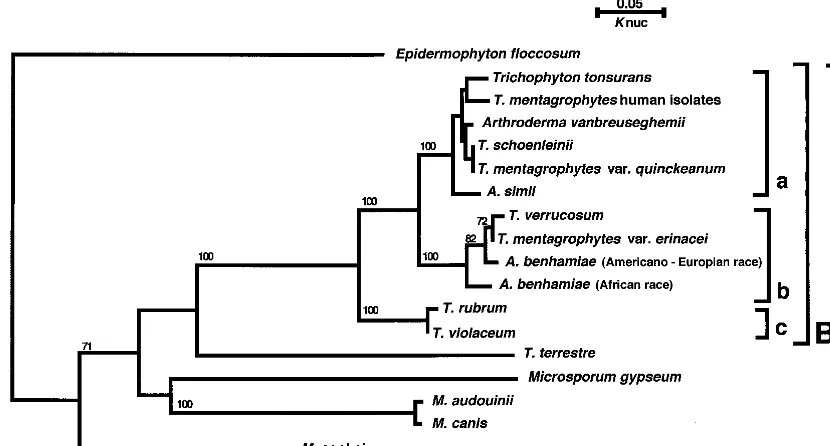Phylogenetic Classification and Species Identification of Dermatophyte Strains Based on DNA Sequences of Nuclear Ribosomal Internal Transcribed Spacer 1 Regions
Full text
Figure


Related documents
Using an anti-His tag, the wild-type Cel9A was detected in peak fraction 45 for the strain carrying pCel9A (Fig. 6 , mid- dle), whereas the engineered form bearing a dockerin
Phylogenetic relationships of the mono genomic species of the wheat tribe Triticeae (Poaceae), inferred from nuclear rDNA (internal transcribed spacer) sequences.. Comments on
With the development of molecular technology, phylogenetic analysis based on sequences of internal transcribed spacer regions 1 and 2 and 5.8S rDNA (ITS1-5.8S-ITS2) of 57
Conclusion: High level of awareness, positive attitude and proper performance by therapeutic and hygienic personnel, show a bright view to.. observing the principles
Run by the European Agency for Safety and Health at Work, the Healthy Workplaces campaign involves employers, workers, workers’ safety representatives, OSH
Inclusion of medication reconciliation within Standard 4 (Medication Safety) of the National Safety and Quality Health Service Standards has raised the awareness of the process as
roles of ethnic identity, self-esteem, acculturation, social support, and family cohesion in.. predicting resiliency for KTAs using